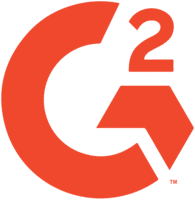What is Recruitment Analytics?
Recruitment analytics refers to the use of data and analytics to track and measure various aspects of the recruitment process. This includes tracking metrics such as the number of applicants, time to fill open positions, cost per hire, and the sources of candidates.
Recruitment analytics allows organizations to understand how well their recruitment efforts are working, identify areas for improvement, and make data-driven decisions.
By using recruitment analytics, organizations can optimize their recruitment processes, reduce costs, and improve the efficiency and effectiveness of their recruitment efforts.
What are the benefits of using Recruitment analytics?
Using recruitment analytics has multiple benefits for organizations, such as better quality of hire, reduced time to hire, and improved return on investment (ROI) of the recruitment budget. By using recruitment metrics in a strategic manner, recruiters can make better hiring decisions.
One of the key benefits of recruitment analytics is the ability to predict the right candidate from the initial stages of the recruitment process. Recruiters can utilize recruitment tools with machine learning algorithms based on the organization’s work culture to quickly discern if a candidate is the right fit for the company. These hiring algorithms can measure the candidate’s soft skills and predict turnover risk, allowing recruiters to easily shortlist prospects and move to the next round of interviews.
Another benefit of recruitment analytics is the ability to improve sourcing. Candidate sourcing is one of the most time-consuming parts of recruitment. Recruitment analytics can help recruiters optimize their hiring strategies by removing poor or ineffective sourcing channels. The reports provided by recruitment analytics will help recruiters evaluate the efficacy of job boards, allowing them to identify the best sourcing channels, get better returns on their job advertising budget, get more competent hires, and improve the quality of hires.
Additionally, recruitment analytics can help recruiters predict future trends. By gaining insights into upcoming industry trends, recruiters can get a better understanding of demand and supply dynamics in the job market, which can then guide them in redefining their hiring strategy for better efficiency and outcomes. Overall, recruitment analytics allows recruiters to make data-driven decisions, improve the effectiveness and efficiency of their recruitment efforts, and ultimately hire the best talent available.
What are some ways to utilize recruitment analytics?
Recruitment analytics can be used in a variety of ways to improve the recruitment process, some examples include:
- Identifying the most effective recruiting channels: Recruitment analytics can help organizations to identify the most effective recruiting channels, such as job boards or social media, for sourcing candidates.
- Measuring the effectiveness of recruiting efforts: Recruitment analytics can be used to track metrics such as the number of applicants, time to fill open positions, and cost per hire to measure the effectiveness of recruiting efforts.
- Identifying patterns and trends in candidate data: Recruitment analytics can be used to identify patterns and trends in candidate data, such as qualifications and skills, to inform future recruiting efforts.
- Analyzing the performance of hiring managers: Recruitment analytics can be used to track the performance of hiring managers, such as their success rate in filling open positions, to identify areas for improvement.
- Optimizing the recruitment process: Recruitment analytics can be used to identify inefficiencies in the recruitment process, such as bottlenecks, and optimize the process for better results.
- Improving the candidate experience: Recruitment analytics can be used to track how candidates interact with the recruitment process and identify areas for improvement to enhance the candidate experience.
- Improving the diversity and inclusion: Recruitment analytics can be used to identify and remove potential bias in the recruitment process, allowing organizations to improve diversity and inclusion in their workforce.
